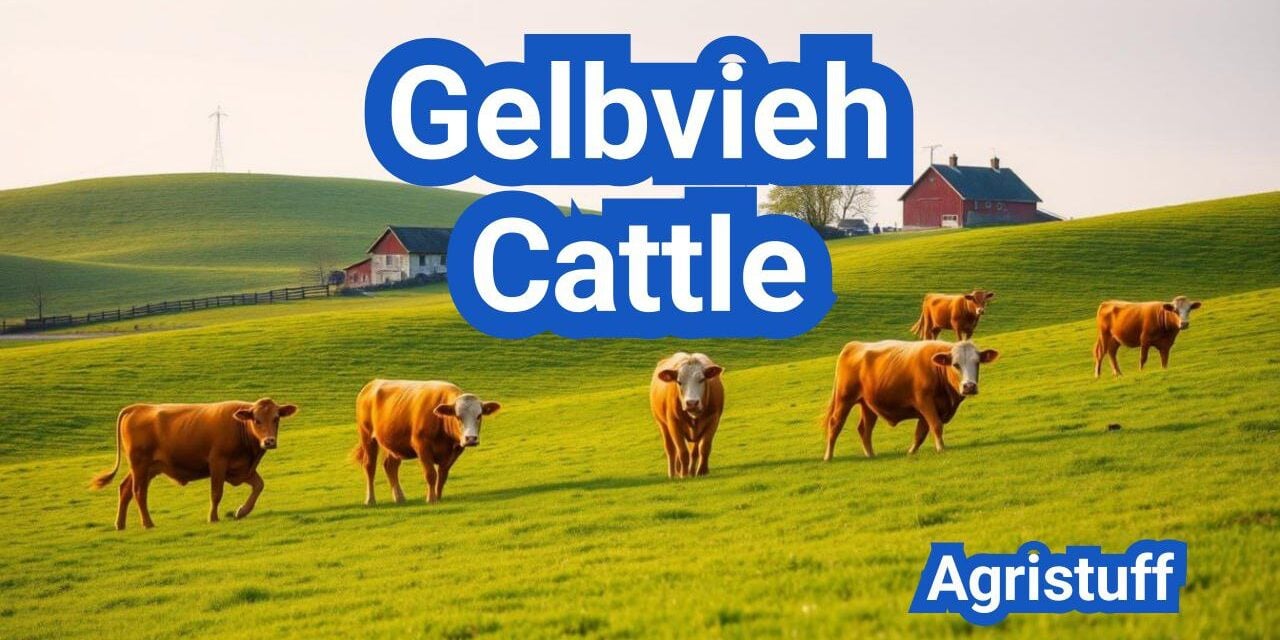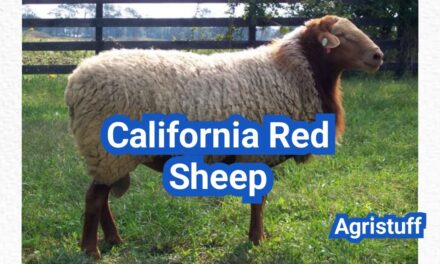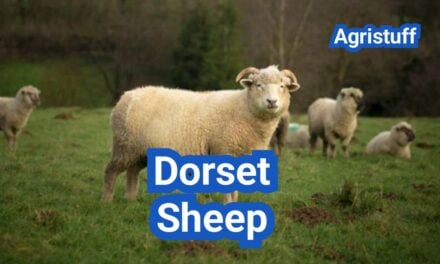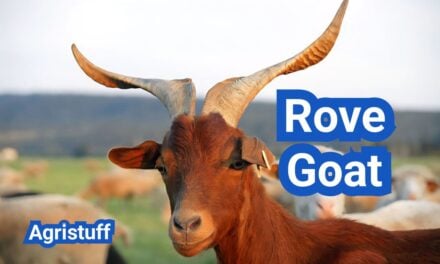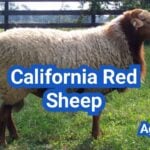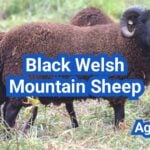The Gelbvieh breed has a rich history that dates back to its origins in Bavaria, southern Germany. Developed from self-colored Bernese and Swiss Brown cattle used on local red or red-spotted cattle, this breed has evolved over time to become a prominent cattle breed.
With its unique characteristics and adaptability, Gelbvieh cattle have become a popular choice among cattle breeders. The breed’s history, origin, and uses are essential aspects that will be explored in this article, providing a comprehensive understanding of what makes Gelbvieh cattle a valuable resource.
Key Takeaways
- Origin of Gelbvieh cattle in Bavaria, southern Germany
- Development from Bernese and Swiss Brown cattle
- Characteristics and adaptability of the breed
- Uses of Gelbvieh cattle in modern times
- Role of the American Gelbvieh Association in promoting the breed
The Origins of Gelbvieh Cattle
Gelbvieh cattle, known for their robust characteristics, have their roots deeply embedded in the Franconian regions of Germany. The breed originated in the three Franconian districts of Northern Bavaria, southern Germany, where they were initially valued for their triple-purpose capabilities: milk production, meat, and draft.
German Roots and Development
The development of Gelbvieh cattle is closely tied to the agricultural practices of the Franconian regions. Farmers in these areas sought a robust and versatile breed that could provide milk, meat, and labor. The breed’s early development was characterized by selective breeding practices aimed at enhancing these triple-purpose traits.
As noted by agricultural historians, “The Gelbvieh breed was developed to be a hardy and productive animal, capable of thriving in the varied conditions of the Franconian landscape.” This historical context highlights the breed’s adaptability and resilience.
Evolution from a Triple-Purpose Breed
Over time, the Gelbvieh breed underwent significant changes, evolving from a triple-purpose breed to one that is now primarily recognized for its beef production qualities. This evolution was driven by changing agricultural practices and market demands. The breed’s maternal traits, growth rate, and carcass quality became more pronounced as breeding programs focused on these aspects.
- The breed’s initial triple-purpose use gave way to a focus on beef production.
- Selective breeding programs emphasized maternal traits, growth rate, and carcass quality.
- The result is a breed that is highly regarded for its beef production capabilities.
Today, Gelbvieh cattle are recognized for their contribution to the beef industry, both as a purebred breed and through crossbreeding programs. Their history and development are a testament to the breed’s versatility and the adaptability of cattle breeding practices.
History and Development of the Gelbvieh Breed

Systematic breeding programs in Germany laid the foundation for the modern Gelbvieh breed. The history of Gelbvieh cattle is a story of careful selection and breeding practices that began in the 19th century.
The development of the Gelbvieh breed was a gradual process that involved several key stages. Initially, the breed was developed as a triple-purpose animal, used for milk, meat, and draft purposes.
Early Breeding Programs in Germany
Breeding work for the Gelbvieh began in earnest in 1850, with stud herds playing a crucial role in the breed’s early development. By 1870, intensive breeding work was underway, further refining the breed’s characteristics.
The early breeding programs focused on creating a robust and versatile animal. These efforts were instrumental in establishing the breed’s foundation stock.
Transition to a Specialized Beef Breed
Over time, the Gelbvieh breed underwent a significant transformation, transitioning from a triple-purpose animal to a specialized beef breed. This shift was driven by changing agricultural needs and market demands.
The transition involved selective breeding to enhance the breed’s beef-producing qualities. As a result, the modern Gelbvieh is renowned for its growth rate, carcass quality, and maternal traits.
Introduction of Gelbvieh Cattle to North America
The introduction of Gelbvieh cattle to North America marked a significant milestone in the U.S. beef industry. This event not only brought a new breed to the forefront but also introduced genetics that would enhance the quality and efficiency of beef production.
First Imports to the United States
In July 1971, the U.S. beef industry witnessed a pivotal moment with the importation of Gelbvieh semen from Germany. This strategic move was the first step in introducing the Gelbvieh breed to North America. The decision to import Gelbvieh genetics was driven by the breed’s exceptional traits, including its growth rate, maternal abilities, and carcass quality.
The importation process was carefully managed to ensure the successful integration of Gelbvieh genetics into the U.S. cattle population. Key aspects of this process included:
- Selecting high-quality semen from top Gelbvieh breeding lines
- Collaborating with U.S. breeders to implement effective breeding programs
- Monitoring the performance of Gelbvieh-influenced cattle to assess their potential
Formation of the American Gelbvieh Association
Later in 1971, following the initial semen imports, the American Gelbvieh Association (AGA) was formed. The AGA played a crucial role in promoting the Gelbvieh breed, developing breed standards, and providing a unified voice for Gelbvieh breeders across the United States.
The formation of the AGA was a significant step in establishing a structured breeding program for Gelbvieh cattle in the U.S. The association focused on:
- Registering Gelbvieh cattle and maintaining breed records
- Developing breeding programs to enhance the breed’s desirable traits
- Providing education and support to Gelbvieh breeders
The introduction of Gelbvieh cattle to North America and the establishment of the AGA marked the beginning of a new era in U.S. beef production. The breed’s impact on the industry has been profound, contributing to improvements in beef quality, production efficiency, and cattle breeding practices.
Gelbvieh Cattle in the United States Today

With a rich history and robust genetics, Gelbvieh cattle are thriving in the United States, supported by a strong network of breeders and a dedicated association. The breed has become an integral component of the American beef industry, known for its versatility and productivity.
Population and Distribution
The Gelbvieh breed has experienced significant growth in the U.S., with approximately 45,000 active, registered Gelbvieh cows. The American Gelbvieh Association, the largest Gelbvieh association worldwide, has been instrumental in this growth, providing resources and support to breeders across the country.
Gelbvieh cattle are distributed across various regions in the United States, with a notable presence in the Great Plains and Midwest, where their adaptability and hardiness are particularly valued.
Major Breeding Programs
Several prominent breeding programs have been established in the U.S., focusing on enhancing the breed’s desirable traits such as fertility, growth rate, and carcass quality. These programs utilize advanced genetic selection tools and breeding technologies to improve the overall productivity of Gelbvieh cattle.
Some of the key breeding objectives include improving calving ease, increasing weaning weights, and enhancing marbling to meet the demands of both domestic and international markets.
Impact on the American Beef Industry
Gelbvieh cattle have made a substantial impact on the American beef industry, contributing to the genetic diversity and productivity of cattle operations. Their influence is seen in both purebred and crossbreeding programs, where they are valued for their maternal traits and growth performance.
The integration of Gelbvieh genetics into commercial herds has led to improvements in efficiency and profitability, making them a popular choice among producers seeking to enhance their herd’s performance.
| Category | Statistic | National Average |
|---|---|---|
| Registered Gelbvieh Cows | 45,000 | N/A |
| Calving Ease | 95% | 85% |
| Average Weaning Weight | 550 lbs | 500 lbs |
The data presented in the table highlights the breed’s advantages in terms of reproductive efficiency and growth performance, underscoring its value to the U.S. beef industry.
Physical Characteristics of Gelbvieh Cattle
The physical attributes of Gelbvieh cattle, such as their muscular build and pigmentation, make them stand out in the cattle industry. These characteristics not only contribute to their aesthetic appeal but also play a significant role in their productivity and hardiness.
Size and Weight Specifications
Gelbvieh cattle are known for their substantial size and weight. Mature cows typically weigh between 1,100 and 1,500 pounds, while bulls can weigh between 1,800 and 2,500 pounds. Their size and muscular build make them well-suited for beef production.
The frame size of Gelbvieh cattle is generally considered moderate to large, which allows them to be competitive in a variety of production systems. Their size and weight are significant factors in their popularity among beef producers.
Color Variations and Physical Traits
Gelbvieh cattle are characterized by their reddish-gold to russet or black color, which is a result of their genetic makeup. They also have strong skin pigmentation and fine hair, contributing to their overall appearance and hardiness.
The breed’s color variations are a result of selective breeding practices that have been employed over the years. The pigmentation of their skin provides protection against solar radiation, making them more adaptable to various environmental conditions.
Structural Soundness
Structural soundness is a critical aspect of Gelbvieh cattle, as it directly impacts their longevity and productivity. The breed is known for its strong feet and legs, as well as its well-defined muscling.
A key indicator of structural soundness in Gelbvieh cattle is their ability to maintain a high level of productivity over their lifespan. This is reflected in their fertility, milking ability, and overall health.
| Characteristic | Description | Importance |
|---|---|---|
| Size | Moderate to large frame size | Competitiveness in production systems |
| Weight | Cows: 1,100-1,500 lbs, Bulls: 1,800-2,500 lbs | Beef production potential |
| Color | Reddish-gold to russet or black | Aesthetic appeal and genetic diversity |
| Skin Pigmentation | Strong | Protection against solar radiation |
| Structural Soundness | Strong feet and legs, well-defined muscling | Longevity and productivity |
Temperament and Behavioral Traits

Gelbvieh cattle exhibit a unique combination of docility and robust maternal instincts, setting them apart from other breeds. Their calm demeanor makes them easier to handle, which is a significant advantage for farmers and breeders.
Docility and Handling Ease
Gelbvieh cattle are known for their quiet disposition and docile temperament, making them easy to manage in various farming settings. This trait is particularly beneficial during handling and veterinary care, as it reduces stress for both the animals and the handlers.
The docility of Gelbvieh cattle also contributes to a safer working environment, minimizing the risk of injuries to handlers and reducing the overall stress levels of the animals.
Maternal Instincts
In addition to their docile nature, Gelbvieh cattle are praised for their strong maternal instincts. Cows are known to be protective and nurturing towards their calves, ensuring their health and well-being.
This maternal trait is crucial for the survival and thriving of newborn calves, as it promotes better calf care and reduces mortality rates. The strong maternal instincts of Gelbvieh cattle contribute to the overall success of breeding programs.
Overall, the temperament and behavioral traits of Gelbvieh cattle make them an attractive choice for cattle producers looking for a breed that is both manageable and productive.
Maternal Traits of Gelbvieh Cattle
Gelbvieh cattle are renowned for their exceptional maternal traits, making them a valuable asset in beef production. Their maternal characteristics have been developed over years of selective breeding, focusing on traits that enhance the productivity and profitability of cow-calf operations.
Calving Ease and Birth Weights
Gelbvieh cattle are known for their calving ease, which is a critical factor in reducing calf mortality and increasing the overall efficiency of beef production. The breed’s moderate birth weights contribute to this ease, making them suitable for a variety of production systems. Calving ease is a heritable trait that has been a focus of Gelbvieh breeding programs, resulting in a breed that is known for unassisted births even in first-calf heifers.
Milk Production and Calf Raising
The milk production of Gelbvieh cows is another significant maternal trait that contributes to their value. Gelbvieh dams are known for their ability to produce sufficient milk to raise fast-growing calves. This trait not only enhances calf growth rates but also supports the overall health and vigor of the calves.
Fertility and Reproductive Efficiency
Fertility is a key component of the maternal traits of Gelbvieh cattle. The breed is recognized for its high reproductive efficiency, which includes early puberty, high conception rates, and a strong ability to rebreed. This fertility is crucial for maintaining a productive cow herd with minimal reproductive issues.
Stayability and Longevity
The stayability and longevity of Gelbvieh cattle are also noteworthy. Gelbvieh females are known for their ability to remain productive over many years, reducing the need for replacement heifers and thereby decreasing the overall cost of maintaining the cow herd. This longevity is a testament to the breed’s hardiness and its suitability for a variety of production environments.
Growth Performance and Feed Efficiency

Gelbvieh cattle are renowned for their exceptional growth performance and feed efficiency, making them a popular choice in beef production. Their ability to grow rapidly and efficiently convert feed into high-quality beef is a significant advantage in the industry.
Weaning and Yearling Weights
Gelbvieh cattle are known for their impressive weaning and yearling weights. The breed’s genetic predisposition towards rapid growth means that Gelbvieh calves typically achieve higher weaning weights compared to some other breeds. This trait is crucial for producers as it directly impacts the overall profitability of their operations. Yearling weights are also a significant indicator of a breed’s growth potential, and Gelbvieh cattle consistently demonstrate favorable yearling weights, making them an attractive choice for producers looking to maximize growth rates.
Feed Conversion Rates
One of the standout features of Gelbvieh cattle is their feed conversion efficiency. The breed has been developed to optimize the conversion of feed into muscle mass, reducing the overall cost of production. Efficient feed conversion is critical in maintaining profitability, especially in feedlot operations. Gelbvieh cattle’s ability to achieve market weights on less feed than some other breeds makes them an economical choice for producers.
Average Daily Gain
The average daily gain (ADG) of Gelbvieh cattle is another key performance indicator that highlights their growth capabilities. Gelbvieh are bred to achieve high ADG, ensuring that they reach market weight quickly. This trait not only improves the efficiency of beef production but also enhances the overall quality of the beef produced. Producers benefit from the breed’s ability to gain weight rapidly, as it allows for quicker turnaround times and increased productivity.
Carcass Traits and Beef Quality

Gelbvieh cattle are renowned for their outstanding carcass traits, making them a valuable asset in the beef industry. Their exceptional beef quality is a result of careful breeding and selection programs that have focused on improving carcass characteristics.
Yield Grade Performance
The yield grade of Gelbvieh cattle is a critical factor in determining their beef quality. Yield grade refers to the amount of boneless, closely trimmed retail cuts that can be obtained from the major wholesale cuts. Gelbvieh cattle are known for their desirable yield grades, typically scoring between 2 and 3, which indicates a high percentage of usable beef.
Factors influencing yield grade include:
- Muscling and fat distribution
- Carcass weight and size
- Breeding and genetics
Quality Grade Expectations
Gelbvieh cattle are also recognized for their high-quality grade beef. The quality grade is an assessment of the beef’s tenderness, juiciness, and flavor, primarily determined by the animal’s marbling and maturity. Gelbvieh beef is often graded as Choice or Prime, reflecting its superior eating quality.
The quality grade expectations for Gelbvieh cattle are influenced by factors such as:
- Genetic predisposition to marbling
- Nutritional management and feeding practices
- Handling and care practices
USDA Beef Grading Standards
The USDA beef grading standards provide a framework for evaluating the quality and yield of beef carcasses. Gelbvieh cattle are evaluated based on these standards to determine their quality and yield grades. Understanding and meeting these standards is crucial for producers aiming to market high-quality Gelbvieh beef.
| Grade | Description |
|---|---|
| Prime | Highest quality, abundant marbling |
| Choice | High quality, moderate marbling |
| Select | Leaner, less marbling |
How to Breed Gelbvieh Cattle: Step-by-Step Guide

To breed Gelbvieh cattle successfully, one must follow a structured program that begins with the selection of high-quality breeding stock. This foundational step is crucial for the overall health and productivity of the herd.
Step 1: Selecting Quality Breeding Stock
Selecting the right breeding stock is the first and most critical step in any Gelbvieh breeding program. This involves evaluating potential breeding animals based on their genetic merit, physical characteristics, and performance records. Expected Progeny Differences (EPDs) are valuable tools in this selection process, providing insights into an animal’s breeding value.
Step 2: Implementing Breeding Season Management
Effective breeding season management is essential for achieving high conception rates and synchronizing calving. This step involves planning the breeding season to coincide with optimal environmental conditions and managing the reproductive health of the breeding stock. Techniques such as estrus synchronization can be employed to enhance breeding efficiency.
Step 3: Monitoring Pregnancy and Calving
Once breeding is complete, monitoring pregnancy rates and managing the calving process are critical. Regular veterinary checks can help identify any potential issues early, ensuring the health of both the dam and the calf. A well-managed calving season is key to minimizing losses and maximizing the survival rate of calves.
Step 4: Managing Post-Calving Care
Post-calving care involves ensuring that cows are recovering well from calving and that calves are healthy and thriving. This includes monitoring for any signs of illness or nutritional deficiencies, providing appropriate nutrition to both cows and calves, and implementing a robust health program to protect against diseases.
By following these steps, cattle breeders can develop a successful Gelbvieh breeding program that enhances the productivity and profitability of their operation.
Understanding Gelbvieh EPDs (Expected Progeny Differences)
Understanding Expected Progeny Differences (EPDs) is essential for making informed breeding decisions in Gelbvieh cattle. EPDs are a crucial tool for predicting the genetic merit of animals for various traits, including growth, maternal ability, and carcass quality.
Growth and Production EPDs
Growth EPDs in Gelbvieh cattle are used to predict an animal’s genetic potential for growth traits such as birth weight, weaning weight, and yearling weight. These EPDs help breeders select animals that will grow at an optimal rate, ensuring they reach market weight efficiently.
Key Growth EPDs include:
- Birth Weight EPD: Predicts the average birth weight of an animal’s progeny.
- Weaning Weight EPD: Estimates the weaning weight of an animal’s calves.
- Yearling Weight EPD: Predicts the weight of an animal’s progeny at one year of age.
Maternal EPDs
Maternal EPDs are vital for evaluating the reproductive and maternal traits of Gelbvieh females. These include EPDs for calving ease, maternal milk production, and reproductive efficiency.
Maternal EPDs help breeders identify females that will produce calves with ease and raise them successfully.
Carcass EPDs
Carcass EPDs predict the genetic merit of Gelbvieh cattle for carcass traits such as marbling, ribeye area, and fat thickness. These EPDs are crucial for producers aiming to improve the quality and value of their cattle.
| EPD Category | Description | Importance |
|---|---|---|
| Growth EPDs | Predict genetic potential for growth traits | Helps in selecting animals for optimal growth rate |
| Maternal EPDs | Evaluate reproductive and maternal traits | Essential for identifying productive females |
| Carcass EPDs | Predict genetic merit for carcass traits | Crucial for improving carcass quality and value |
Using EPDs in Selection Decisions
EPDs are a powerful tool in Gelbvieh breeding programs, enabling breeders to make data-driven decisions. By considering EPDs for various traits, breeders can select animals that will improve their herd’s overall performance and profitability.
By integrating EPDs into their selection criteria, Gelbvieh breeders can enhance the genetic quality of their herds, leading to improved productivity and competitiveness in the beef industry.
Balancer Cattle: The Gelbvieh-Angus Cross

By crossing Gelbvieh with Angus, the Balancer cattle breed was developed to leverage the strengths of both parent breeds. This crossbreeding strategy aims to combine the superior maternal traits of Gelbvieh with the renowned beef quality of Angus.
Development of the Balancer Program
The Balancer breed was developed through a systematic crossbreeding program between Gelbvieh and Angus cattle. The primary goal was to create a breed that benefits from hybrid vigor, resulting in improved fertility, growth rate, and overall performance.
The development process involved selecting superior individuals from both breeds, focusing on traits such as:
- Enhanced fertility and reproductive efficiency
- Improved growth rates and feed efficiency
- Superior carcass quality and yield
- Docility and ease of handling
Advantages of Balancer Cattle
Balancer cattle offer several advantages over purebred cattle, including:
- Increased hybrid vigor, leading to improved growth rates and efficiency
- Better adaptability to various production environments
- Enhanced maternal traits, including fertility and milk production
- Improved carcass quality, with optimal marbling and yield
Southern Balancer Variations
In regions with challenging climatic conditions, such as the Southern United States, Balancer cattle have been adapted to thrive. Southern Balancer variations are bred to withstand heat stress and humidity, making them ideal for producers in these areas.
Performance Metrics of Balancer Cattle
The performance of Balancer cattle is evaluated based on several key metrics, including:
| Metric | Description | Expected Value |
|---|---|---|
| Weaning Weight | Weight of calf at weaning | 500-600 lbs |
| Average Daily Gain | Rate of weight gain post-weaning | 2.5-3.5 lbs/day |
| Feed Conversion Ratio | Efficiency of feed utilization | 4.5-5.5 |
These metrics demonstrate the superior performance of Balancer cattle, making them an attractive choice for commercial beef producers.
Crossbreeding Strategies with Gelbvieh
Crossbreeding with Gelbvieh cattle has gained popularity due to its potential to enhance beef production through heterosis. This breeding strategy involves combining Gelbvieh with other breeds to produce offspring with superior traits.
Heterosis Benefits in Beef Production
Heterosis, or hybrid vigor, is a significant advantage of crossbreeding Gelbvieh cattle. It results in improved performance traits such as growth rate, fertility, and survival. The benefits of heterosis include:
- Increased weaning weights
- Improved reproductive efficiency
- Enhanced disease resistance
- Better overall vigor and hardiness
Heterosis is particularly valuable in beef production as it can lead to increased profitability for producers. By leveraging the genetic diversity between breeds, producers can create cattle that excel in various production environments.
Compatible Breeds for Crossbreeding
Gelbvieh cattle can be crossed with a variety of breeds to achieve specific production goals. Some compatible breeds include:
- Angus: Known for high-quality beef, Angus-Gelbvieh crosses can produce high-performing calves.
- Simmental: Simmental-Gelbvieh crosses are often used for their rapid growth and muscular development.
- Hereford: Hereford-Gelbvieh crosses can benefit from the hardiness and maternal traits of both breeds.
The key to successful crossbreeding is selecting breeds that complement the strengths of Gelbvieh, such as their maternal traits and growth performance.
Designing Effective Crossbreeding Systems
Designing an effective crossbreeding system involves several considerations, including production goals, breed selection, and management practices. Producers should:
- Define clear production objectives, such as improving growth rates or enhancing maternal traits.
- Select breeds that are genetically compatible and complementary to Gelbvieh.
- Implement a structured breeding program that includes record-keeping and selection based on performance data.
By carefully planning and managing crossbreeding programs, producers can maximize the benefits of heterosis and improve the overall efficiency of their beef production operations.
Advantages and Disadvantages of Raising Gelbvieh Cattle
The decision to raise Gelbvieh cattle involves weighing their advantages against their disadvantages. Gelbvieh cattle have become a popular choice among beef producers due to their unique combination of maternal traits, growth performance, and carcass quality.
Key Benefits for Commercial Producers
Gelbvieh cattle offer several benefits to commercial producers. Their maternal traits, such as calving ease and milk production, make them an excellent choice for cow-calf operations. Additionally, Gelbvieh cattle are known for their growth performance and feed efficiency, which can lead to higher profits for producers.
- Improved fertility and reproductive efficiency
- Enhanced maternal instincts and calf care
- Competitive growth rates and feed conversion
- High-quality carcasses with desirable yield and quality grades
These benefits are significant for commercial producers looking to optimize their cattle operations. By leveraging the strengths of Gelbvieh cattle, producers can improve their bottom line and remain competitive in the market.
Challenges and Limitations
While Gelbvieh cattle offer many advantages, there are also challenges and limitations to consider. Some of these include the initial investment in high-quality breeding stock and the need for effective breeding season management. Additionally, producers must be aware of potential issues related to breed characteristics, such as temperament and structural soundness.
| Advantages | Disadvantages |
|---|---|
| Maternal traits and calving ease | Higher initial investment in breeding stock |
| Growth performance and feed efficiency | Potential temperament issues |
| High-quality carcasses | Need for effective breeding season management |
Comparison with Other Popular Beef Breeds
When considering Gelbvieh cattle, it’s essential to compare them with other popular beef breeds. Breeds like Angus and Simmental are often used in crossbreeding programs to leverage their strengths. Gelbvieh cattle, however, offer a unique combination of traits that can be advantageous in certain production systems.
For example, Gelbvieh cattle are known for their docility and handling ease, making them a good choice for producers who prioritize animal welfare and ease of management. In contrast, breeds like Simmental may offer higher growth rates but can be more challenging to handle.
In conclusion, raising Gelbvieh cattle involves understanding their advantages and disadvantages. By weighing these factors and comparing them with other breeds, producers can make informed decisions that best suit their operations.
Commercial Uses and Management of Gelbvieh Cattle
With their robust genetics and efficient growth rates, Gelbvieh cattle are increasingly being utilized in commercial beef production. Their versatility makes them suitable for various operations, from seedstock production to commercial cow-calf operations.
Seedstock Production
Gelbvieh cattle are highly regarded in seedstock production due to their superior genetics and breeding characteristics. They are known for their ability to pass on desirable traits to their offspring, such as growth rate, fertility, and carcass quality. Seedstock producers value Gelbvieh for their potential to improve herd performance.
Commercial Cow-Calf Operations
In commercial cow-calf operations, Gelbvieh cattle are prized for their maternal traits and reproductive efficiency. They are known for their ease of calving, high milk production, and ability to raise healthy calves. This makes them an excellent choice for producers looking to optimize their calf crop.
Feedlot Performance
Gelbvieh cattle also excel in feedlot settings, where their growth performance and feed efficiency are highly valued. They are known for their ability to gain weight quickly and efficiently, making them a popular choice among feedlot operators. Their carcass quality is also a significant advantage, as they produce high-quality beef that meets market demands.
Nutrition and Health Management
Effective nutrition and health management are crucial for the success of Gelbvieh cattle operations. Producers must ensure that their cattle receive a balanced diet that meets their nutritional needs, as well as implement robust health management practices to prevent disease and maintain herd health. Regular monitoring and veterinary care are essential components of a successful Gelbvieh cattle operation.
The Future of Gelbvieh Cattle in Modern Beef Production
Gelbvieh cattle continue to play a significant role in modern beef production, thanks to their exceptional maternal traits and growth performance. As the beef industry evolves, the demand for efficient and productive cattle breeds like Gelbvieh is expected to grow.
The future of Gelbvieh cattle looks promising, with their adaptability and versatility making them an attractive choice for producers. The breed’s ability to improve herd genetics and enhance overall beef production efficiency is well-documented.
Industry trends indicate a shift towards more sustainable and efficient beef production systems, where breeds like Gelbvieh can thrive. By leveraging their strengths in maternal traits, growth rate, and carcass quality, Gelbvieh cattle are poised to remain a valuable component of the modern beef industry.
As producers and breeders continue to develop and refine their breeding programs, the Gelbvieh breed is likely to play an increasingly important role in shaping the future of beef production in the United States and beyond.
FAQ
What is the origin of Gelbvieh cattle?
Gelbvieh cattle originated in Germany, where they were developed as a triple-purpose breed for milk, meat, and draft.
What are the characteristics of Gelbvieh cattle?
Gelbvieh cattle are known for their docility, maternal traits, and growth performance. They are a moderate-sized breed with a muscular build and are often red or black in color.
What is the difference between Gelbvieh and Balancer cattle?
Balancer cattle are a cross between Gelbvieh and Angus breeds, combining the strengths of both breeds. Gelbvieh cattle are a purebred breed, while Balancer cattle are a composite breed.
What are the advantages of raising Gelbvieh cattle?
Gelbvieh cattle are known for their fertility, calving ease, and milk production. They are also praised for their growth rate and feed efficiency.
What are the disadvantages of raising Gelbvieh cattle?
Some producers may find that Gelbvieh cattle require more management than other breeds, particularly in terms of breeding and calving.
How do I select quality Gelbvieh breeding stock?
When selecting Gelbvieh breeding stock, look for animals with desirable traits such as fertility, growth rate, and maternal ability. Use EPDs (Expected Progeny Differences) to make informed selection decisions.
What is the role of EPDs in Gelbvieh breeding?
EPDs are a tool used to predict an animal’s genetic merit for various traits. They help breeders make informed decisions when selecting breeding stock.
How do I manage a Gelbvieh breeding program?
Effective management of a Gelbvieh breeding program involves selecting quality breeding stock, implementing a breeding season, and monitoring pregnancy and calving.
What are the benefits of crossbreeding with Gelbvieh cattle?
Crossbreeding with Gelbvieh cattle can result in heterosis, or hybrid vigor, which can improve fertility, growth rate, and overall performance.
What breeds are compatible with Gelbvieh for crossbreeding?
Angus is a common breed used in crossbreeding with Gelbvieh, resulting in the Balancer composite breed. Other breeds may also be used, depending on the desired outcome.
How do I manage the nutrition and health of Gelbvieh cattle?
Gelbvieh cattle require a balanced diet that meets their nutritional needs. Regular health checks and vaccinations are also essential for maintaining their health.
What is the future of Gelbvieh cattle in modern beef production?
Gelbvieh cattle are likely to continue playing a significant role in modern beef production due to their desirable traits and adaptability.
Conclusion of: Gelbvieh Cattle
What Are Gelbvieh Cattle?
Gelbvieh Cattle are a versatile beef breed valued in the United States for maternal efficiency, calm temperament, strong growth, and adaptable carcass merit, giving commercial and seedstock producers a practical path to profitability with Gelbvieh Cattle. American Gelbvieh Association — Breed History
History & Origin in Germany
Gelbvieh Cattle originated in Bavaria, Germany, where systematic selection in the 19th century produced dual-purpose “red-yellow” stock prized for meat, milk, and work—foundations that still benefit modern herds using Gelbvieh Cattle. Oklahoma State University — Gelbvieh Cattle
Arrival and Establishment in the United States
Gelbvieh Cattle entered the U.S. via artificial insemination in 1971, allowing rapid genetic dissemination and performance tracking, and the American Gelbvieh Association formed the same year to support data-driven progress in Gelbvieh Cattle. OSU — U.S. Introduction
Breed Characteristics: Color, Frame, and Horn Status
Typically red to golden with strong pigmentation, Gelbvieh Cattle historically included horned animals, but polled lines are now common; the moderate frame and structural soundness support longevity and pasture efficiency in Gelbvieh Cattle. OSU — Traits & Description
Temperament & Docility
Docility is a hallmark of Gelbvieh Cattle, and calmer cattle are linked with safer handling, better gains, and improved carcass outcomes; standard disposition scoring helps select sires and dams that pass on easy-handling traits in Gelbvieh Cattle. AGA — Disposition Scoring & Data Collection
Maternal Strengths and Cow Efficiency
Producers choose Gelbvieh Cattle for fertility, stayability, calving ease, and pounds weaned per cow—key maternal metrics that translate directly to ranch profit and long-term herd improvement with Gelbvieh Cattle. AGA — Maternal Influence
Mature Cow Size and Sustainability
Analyses based on U.S. Meat Animal Research Center datasets show that Gelbvieh Cattle tend to have moderate mature cow weights, helping control maintenance costs while sustaining output—a sustainability edge for Gelbvieh Cattle. AGA — USMARC Mature Cow Size Findings
Growth & Performance on the Ranch
Beyond maternal traits, Gelbvieh Cattle exhibit balanced growth and muscling that help calves hit weight targets efficiently, adapting well to grass-based programs and feedlot finishing for Gelbvieh Cattle. AGA — Efficiency & Performance Overview
Carcass Merit: Yield and Quality in Today’s Market
To capture premiums with Gelbvieh Cattle, understand USDA grading: quality grades predict eating experience and yield grades estimate cutability; managing finish and muscling lets Gelbvieh Cattle fit packer programs without discounts. USDA AMS — Beef Grades & Standards
Where Gelbvieh Cattle Fit: Crossbreeding & Heterosis
Crossbreeding remains a proven tool, and Gelbvieh Cattle add fertility, longevity, and pounds weaned while capturing heterosis in maternal and growth traits that strengthen commercial systems using Gelbvieh Cattle. Mississippi State Extension — Crossbreeding Systems (PDF)
What Are Balancer® Cattle?
Balancer® cattle—an Angus or Red Angus composite built with Gelbvieh genetics—let producers blend strengths predictably, and many herds use Balancer alongside purebred Gelbvieh Cattle to synchronize calving ease, growth, and carcass goals rooted in Gelbvieh Cattle. Drovers Cattle Exchange — Balancer Overview
Southern Balancer & Adaptation
In hot and humid regions, Southern Balancer composites introduce heat tolerance while preserving maternal heterosis and carcass consistency from Gelbvieh Cattle, extending the usefulness of Gelbvieh Cattle genetics across U.S. climates. Drovers — Southern Balancer Notes
How to Read EPDs When Selecting Gelbvieh Cattle
Expected Progeny Differences (EPDs) enable within-breed comparisons; use Calving Ease Direct, Birth Weight, Weaning/Yearling Weight, Milk, and Docility to align Gelbvieh Cattle purchases with your objectives, keeping accuracy in mind for Gelbvieh Cattle. eXtension — EPD Basics & Definitions
Genomic-Enhanced EPDs (GE-EPDs) for Gelbvieh Cattle
DNA information boosts EPD accuracy, and many seedstock suppliers of Gelbvieh Cattle use GE-EPDs to sharpen predictions—especially valuable for heifers and yearling bulls—reducing risk when investing in Gelbvieh Cattle. Penn State Extension — Genomics & EPDs
Selection Priorities: Calving Ease & Maternal Traits
If replacements are costly, emphasize Heifer Pregnancy, Stayability, and calving-related traits when buying Gelbvieh Cattle or Balancer bulls so daughters from Gelbvieh Cattle remain productive longer. AGA — Stayability & Maternal Advantages
Selection Priorities: Growth & Carcass Traits
For retained ownership or grid marketing, prioritize Weaning/Yearling Weight, Marbling, Ribeye Area, and Fat EPDs to optimize carcass value from Gelbvieh Cattle and hit the mix of yield and quality targets with Gelbvieh Cattle. BeefResearch.org — Beef Grading Overview
Recordkeeping & Trait Measurement
Collect birth, weaning, and yearling weights; score disposition, feet/legs, and udder quality to improve selection pressure in Gelbvieh Cattle, creating stronger EPDs and predictable progeny from Gelbvieh Cattle. AGA — Data Collection & Trait Scoring
Body Condition Scoring: Day-to-Day Management
Use the 1–9 Body Condition Scoring system to time nutrition and reproduction for Gelbvieh Cattle; aim for BCS 5–6 at calving (6 for first-calf heifers) to keep Gelbvieh Cattle cycling and rebreeding on schedule. University of Missouri Extension — BCS Guide
Why Moderate Mature Cow Size Matters
Feed costs track closely with mature cow weight, and the moderate size typical of Gelbvieh Cattle supports wintering costs and stocking rates without sacrificing weaning performance from Gelbvieh Cattle. AGA — Cow Size Findings
Crossbreeding Systems that Use Gelbvieh Cattle
From two-breed crosses to rotational and terminal programs, Gelbvieh Cattle deliver maternal heterosis, calving ease, and pounds weaned; define your replacement plan so Gelbvieh Cattle drive both short-term and long-term gains. University of Tennessee Extension — Crossbreeding (PDF)
From Pasture to Rail: Marketing Gelbvieh Cattle
Whether you sell at weaning, background, or finish, align health and nutrition to hit consistent targets with Gelbvieh Cattle and market into channels that reward your genetics, avoiding discounts on Gelbvieh Cattle carcasses. USDA AMS — Carcass Standards
Common Questions About Gelbvieh Cattle
Producers ask if Gelbvieh Cattle suit heifer projects or small outfits—docility, moderate size, and maternal strength make them user-friendly, while Balancer composites widen choices based on Gelbvieh Cattle. AGA — Breed Background
Final thought
Gelbvieh Cattle combine fertility, stayability, docility, growth, and marketable carcasses into a practical package for U.S. ranches; if you want long-term maternal efficiency and predictable, profitable calves, Gelbvieh Cattle deserve a spot in your plan. AGA — Why Maternal Efficiency Matters
Sources & References
Below are primary sources to explore further details and data supporting Gelbvieh Cattle and related management topics.
- American Gelbvieh Association — Homepage
- American Gelbvieh Association — History & Development
- Oklahoma State University — Gelbvieh Cattle
- American Gelbvieh Association — Maternal Influence
- American Gelbvieh Association — Data Collection & Traits
- USDA AMS — Carcass Beef Grades & Standards
- BeefResearch.org — Beef Grading
- eXtension — EPD Basics & Definitions
- Penn State Extension — Understanding GE-EPDs
- University of Missouri Extension — Body Condition Scoring
- Mississippi State Extension — Crossbreeding Systems (PDF)
- University of Tennessee Extension — Crossbreeding in Beef Cattle (PDF)
- Drovers Cattle Exchange — Balancer Overview
- AGA — USMARC Cow Size News Release

